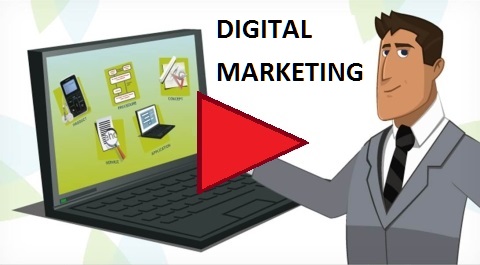The range of marketing options to promote products and services has increased radically over the last ten years. We look at our predicted top 10 biggest influencers on B2B product and service clients for 2018.
1. Video – In 2017 there was 17% total growth in video usage. 81% of all businesses now use video as a marketing tool. 78% of marketers say video generates a good return on investment and the ideal video is 90 seconds to 3 minutes long, with interesting, engaging and thought provoking content. 50% of web users look for videos before they buy a product and 4x as many customers watch a video than read about a product. Video on websites is responsible for a 64% increase in product purchase, it increases average website visit time and increases sales conversions on the site by 20%. Almost twice as many people say they will purchase a product after seeing a video versus non-viewers. Last year YouTube reached 1 billion views of posted videos and it is the second biggest search engine after Google. Vimeo is another option.
2. Social media –Key to engage a target audience in real-time. Facebook group has suffered from negative press in 2018 regarding data trust, but is still core for B2C. In a B2B environment, LinkedIn is still the most important while Google+ remains good for SEO. Other options are Twitter and Instagram. Bear in mind that you should aim to get contributions from those 3% to 5% that have active engagement (share and click on content), rather than people who have more click-jerk passive engagement (liking something).
3. Thought leadership – this can take many forms such as broadcast media interviews, video interviews, trade press interviews, online blogs or fact sheets. The key is delivering content that gets the target audience to challenge their own and their peer’s views of the status quo on products and services.
4. Blog articles – These offer the ideal way to establish thought leadership, if placed in the right trade press and online publications. They allow you to promote the company and products and help with SEO. Whilst most other online media has become briefer, blogs have consistently got longer (around 1,300 words average), showing that there is an audience out there that enjoys a good read on popular topics.
5. Pictures, graphics and infographics – A picture is worth a thousand words as they say, particularly if you want to convince target clients to buy a manufactured product that sells itself visually. Pictures of products in motion or from unusual angles engage interest, and graphs and infographics promote understanding of more difficult or esoterically dry, data driven concepts.
6. Email – Crafting compelling direct marketing campaigns via email is still very important for direct one to one engagement with a target audience. Getting your audience to click from a newsletter/email content to your website is a highly effective driver of traffic to the website. Not surprisingly the key is in ensuring the content is engaging and click worthy, predominantly good quality news items and blogs. However, with GDPR now in place across Europe, it is essential to view this as an in-house activity, with opt-in email contact data directly fed from a CRM system, or integrated as part of your chosen email system.
7. White papers – Perfect for communicating complicated information about products and deployment applications, without clouding the issue with sales messages that might turn a more technical audience off. They still include a strong call to action to draw readers to the website or engage with the sales team.
8. 3D and VR – Virtual reality walk-arounds and fly-throughs are becoming increasingly useful for delivering complex information about products and how they may benefit prospective customers. They are also especially useful if the products they are selling are particularly large, so you can have a 3D animation or walkthrough on a portable tablet. They are also of benefit for demonstrating motion, movement or a cutaway of a product to illustrate advantages that could not be achieved any other way.
9. Podcasts and webinars – Broadcasting content to a selected audience is effective to engage target contacts with more complex messages and / or those on the move using mobile devices with limited time to assimilate information. Webinars can deliver complex presentations online and enable visitors from disparate locations to engage at the same time, as well as allowing interaction between the presenters and audience using filtered questions and answers. A recorded version of the webinar for those that missed it can also be made available on a video channel and can also serve to drive more website traffic.
10. Landing pages – Unlike standard web pages, these are designed to include product information and specific, strong calls to action. These are useful for product or service offers, seasonal specials or events, all of which have a time-based element. They can also be hidden away from the main website to provide a home for specific campaigns that allow you to track who visits a campaign page and its effectiveness over time.
Conclusion
The biggest challenges for board members and marketing professionals is keeping abreast of all of these technological changes and being able to select the best combination to create awareness, interest, trial and adoption of B2B products and services.
If you would like to know how GET Consultants can help you in developing a more effective marketing mix for your business, please contact us here.


